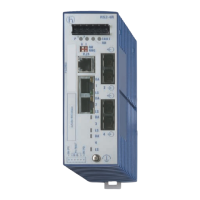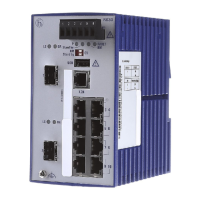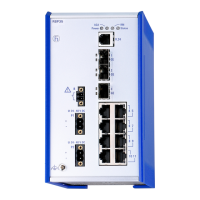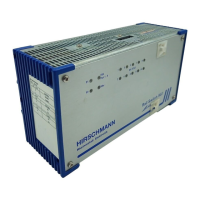Glossary
CLI L2P
Release
7.0
05/2011
548
addresses. Dynamic addressing
simplifies network administration
because the software tracks IP
addresses rather than requiring an
administrator to manage the task. A
new computer can be added to a
network without the hassle of
manually assigning it a unique IP
address.
E
EEPROM. See “Electronically
Erasable Programmable Read Only
Memory” on page 548.
Electronically Erasable
Programmable Read Only
Memory. EEPROM is also known
as Flash memory. This is re-
programmable memory.
F
Fast STP. A high-performance
Spanning Tree Protocol. See “STP”
on page 557 for more information.
FIFO. First In First Out.
Flash Memory. See “EEPROM” on
page 548.
Flow Control. The process of
adjusting the flow of data from one
network device to another to ensure
that the receiving device can handle
all of the incoming data. This is
particularly important where the
sending device is capable of
sending data much faster than the
receiving device can receive it.
There are many flow control
mechanisms. One of the most
common flow control protocols for
asynchronous communication is
called xon-xoff. In this case, the
receiving device sends a an “xoff”
message to the sending device
when its buffer is full. The sending
device then stops sending data.
When the receiving device is ready
to receive more data, it sends an
“xon” signal.
Forwarding. When a frame is
received on an input port on a
switch, the address is checked
against the lookup table. If the
lookup table has recorded the
destination address, the frame is
automatically forwarded on an
output port.
Frame Check Sequence. The
extra characters added to a frame
for error detection and correction.
FCS is used in X.25, HDLC, Frame
Relay, and other data link layer
protocols.
G
GARP. See “Generic Attribute
Registration Protocol.” on page 549.
GARP Information Propagation.
GIP is the propagation of information
between GARP participants for the
same application in a bridge is
carried out by a GIP component.
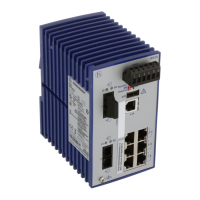
